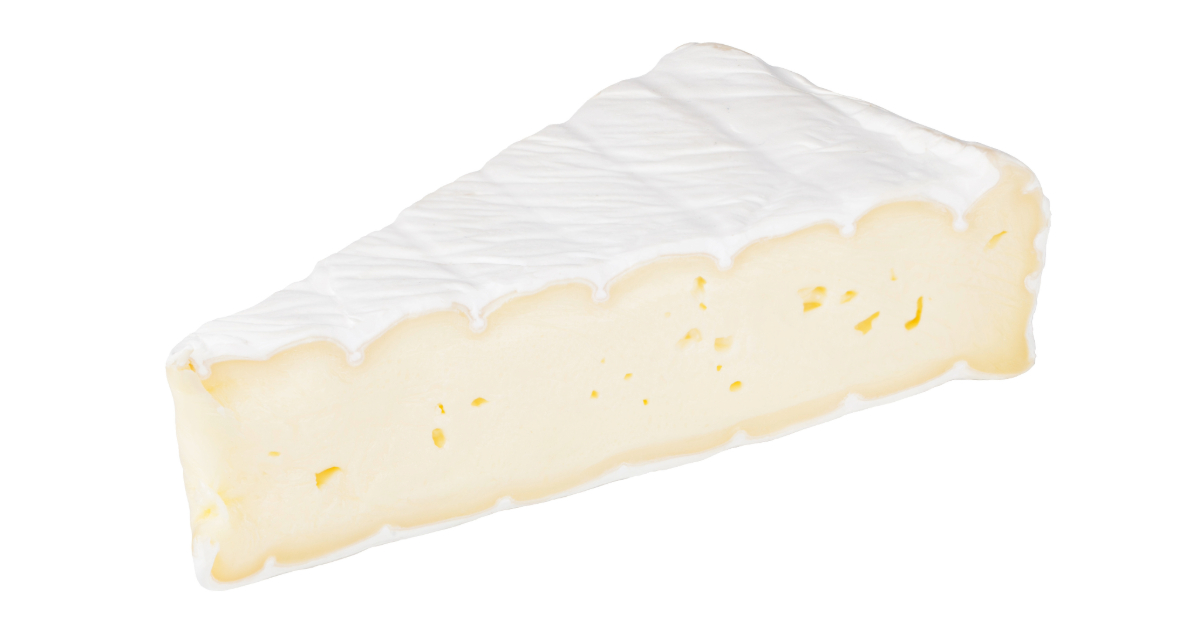Triple cream cheese and Brie are two indulgent types.

At first glance, they may seem quite similar - both have soft, creamy textures and rich, buttery flavors.
However, there are some notable differences between the two.
What is Triple Cream Cheese?
Triple cream cheese refers to a category of soft, bloomy-rind cheese that contains extra cream, resulting in a very high milk fat content. To be classified as "triple cream," the cheese must have at least 75% milk fat content based on the total solids (everything except moisture). This means that once all the moisture is removed, 75% of what remains is pure milk fat.
The addition of extra cream gives triple cream cheeses their signature richness and indulgent mouthfeel. Every spoonful feels like velvet on the tongue! Their texture is so luscious that they practically melt in your mouth.
Common examples of triple cream cheeses include Brillat-Savarin, Saint André, and Pierre Robert from France. There are also some cream-enriched versions of Brie that fall into the triple cream category, which we'll explore more later on.
Key Takeaway: Triple cream cheese contains at least 75% milk fat. The high fat content gives it a rich, decadent texture.
What is Brie Cheese?
Brie refers to a family of soft-ripened cheeses that originated in the French region of Île-de-France. Traditional Brie cheeses have edible, white bloomy rinds and creamy, pale-yellow interiors.
There are a few varieties of French Brie that enjoy AOC (Appellation d'Origine Protégée) status, including Brie de Meaux and Brie de Melun. These specific Bries must be produced according to strict guidelines in order to bear the name.
In terms of fat content, most authentic Brie cheeses contain around 60% milk fat out of total solids. This elevated fat content contributes to the rich, silky texture Brie is prized for.
So while Brie does contain a high amount of fat, it is not as indulgently creamy as triple cream varieties. Nonetheless, it still offers plenty of flavor and a delectable experience for cheese aficionados.
Key Takeaway: Brie is a soft, bloomy-rind cheese that originated in France. Authentic French Brie contains around 60% milk fat.
Main Differences Between Triple Cream and Brie
There are a few noteworthy ways that triple cream cheeses differ from standard Brie:
1. Fat Content
As mentioned earlier, the main distinction lies in the fat content.
| Cheese | Minimum Milk Fat Content |
|---|---|
| Triple Cream | 75% |
| Brie | 60% |
While Brie is rich, triple creams take it to the next level with their abundantly creamy textures.
2. Cream Addition
Triple cream cheeses get their name from having extra cream added during production before the curds are formed. Brie does not typically contain any added cream beyond what is inherently present in the milk.
3. Price Point
The additional cream makes triple cream cheeses more expensive and luxurious than standard Brie. People often enjoy them as special indulgent treats rather than everyday cheeses.
4. Firmness
Triple creams tend to be extremely soft and spoonable when ripe, even more so than Brie. Their texture is almost mousse-like.
Flavor Profiles
Both Brie and triple cream cheeses offer some decadent flavor notes, but there are subtle taste differences too:
Brie Flavors: Buttery, sweet, nutty, mushrooms
Triple Cream Flavors: Butter, cream, chalky tang, hazelnuts
The specific characteristics will vary slightly depending on the brand. But in general, Brie strikes more nutty, mushroomy flavors while triple creams channel pure dairy richness.
Enjoying Brie vs. Triple Cream Cheese
Serving Suggestions
Both Brie and triple cream cheeses make elegant additions to cheese boards. They pair wonderfully with fruits, nuts, chutneys, cured meats and crusty breads. For the fullest flavor, allow them to reach room temperature before serving.
Cooking Uses
Triple cream cheeses melt exquisitely and can be incorporated into appetizers, tarts, fondues, grilled cheese sandwiches and more. However, they may get overly soft when baked into dishes. Brie makes a better choice for baking applications where you want the cheese to hold its shape when cooked.
Wine Pairings
Buttery triple cream cheeses work nicely with sparkling wines. The effervescence cleanses the palate between rich, indulgent bites. Brie matches well with lighter wines like Sauvignon Blanc and rosé.
Common Brands to Try
Triple Creams: Brillat-Savarin, Saint André, Pierre Robert
Bries: Brie de Meaux, Brie de Melun, Brie de Nangis
Trying different brands is a great way to experience the range of textures and flavors across Brie and triple cream styles. Your personal taste preferences will guide you towards your perfect cheese match!
FAQs
What cheese has more fat, Brie or triple cream?
Triple cream cheese has a higher fat content than Brie. Triple creams contain at least 75% milk fat out of total solids, while authentic Brie has around 60% milk fat.
Is Brie a triple cream cheese?
Standard Brie is not a triple cream cheese because it does not meet the requirement of having 75% minimum milk fat content. However, some specialty cream-enriched Bries are produced which could potentially qualify as "triple creams" due to their extra richness.
Why is triple cream cheese so expensive?
The high amount of milk fat makes triple cream cheeses costly and labor-intensive to produce. The cream enrichment process also contributes to their price tag as a luxurious, gourmet delicacy.
Can I bake with triple cream cheese?
You can bake with triple cream cheese but it may get extremely soft, oozey and lose its shape more easily than firmer cheeses. Brie is a better choice for baking applications where you want the cheese to retain some structure after being cooked.
Conclusion
While Brie and triple cream cheese share some traits, triple creams distinguish themselves with their over-the-top, butter-laden decadence. Their richness and rarity make them special occasion splurges for serious cheese-lovers.
Brie offers plenty of flavor and creaminess too, just with slightly more restraint compared to triple creams. And it happens to excel in cooked dishes.

